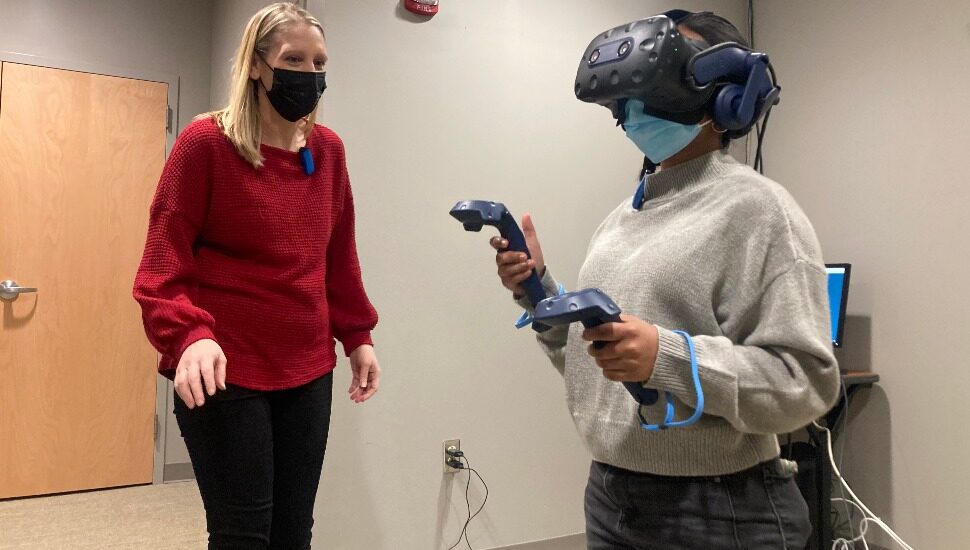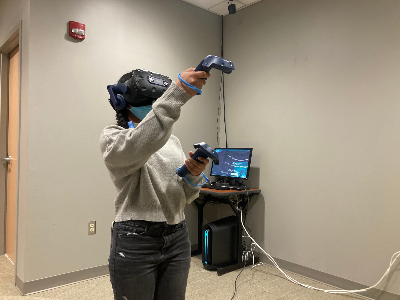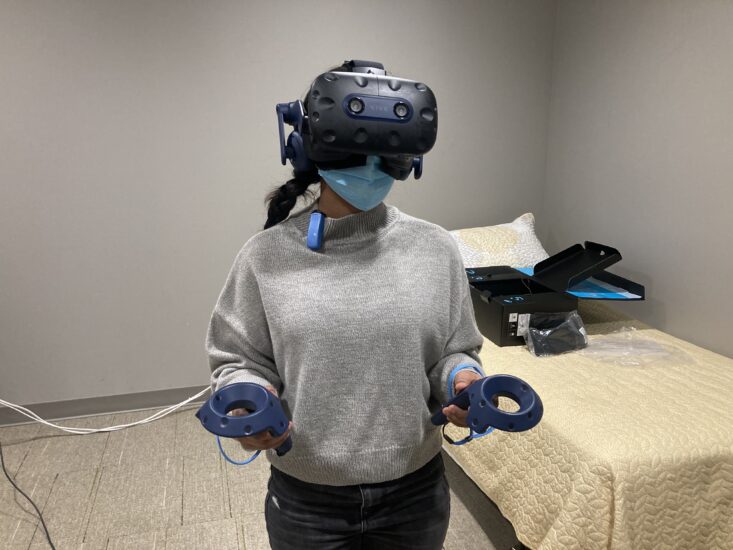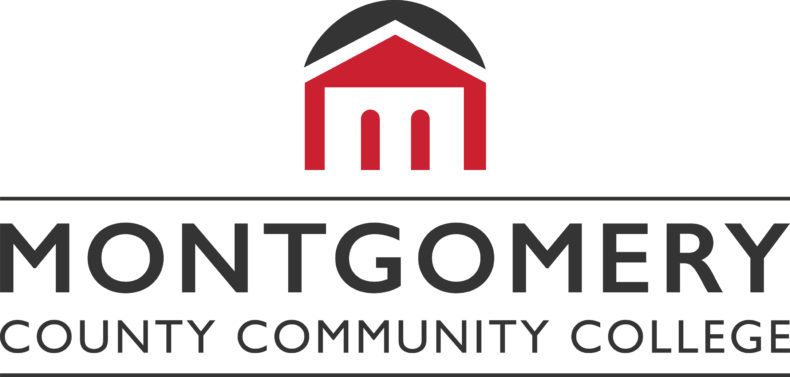MCCC Radiography Students Use Virtual Simulator for Experiential Learning in Blue Bell

Montgomery County Community College Radiography student Christie Biswas got plenty of practice taking an X-ray of her patient’s forearm, without ever having to step foot inside an imaging room.
Wearing a pair of virtual reality goggles with headphones strapped to her head and holding a remote controller in each hand, Biswas lifted her arms into the air and lined up the X-ray tube over top of her digital manikin patient’s wrist.
Then she walked out of the simulated exam room and into the control room, taking care to shut the nonexistent door behind her completely in order to take the X-ray image.
In reality, Biswas was standing in the middle of a small classroom inside the MCCC’s Health Sciences Center. The VR equipment she wore was connected to a desktop computer in the corner of the room by a couple of cables.

“It was fun. I did not realize how much time went by,” said Biswas, after her first experience using the new technology. “It was really fast. I thought I knew where my body was in the room, but I clearly did not know where my body was in the room.”
Biswas is just one of many MCCC Radiography students who will have the opportunity to use the new VR software to practice this semester.
The program has already begun generating buzz, as it is the first program in the country to use the technology in this way, according to Dr. Cheryl DiLanzo, Dean of Health Sciences, and Lance Longwell, Director, Communications and Public Relations at Siemens Medical Solutions.
In fact, the Radiography Procedure Simulation & AI Evaluation project has been selected as an exemplar in the AI for Learning Analytics category of the upcoming 2022 Educause Teaching and Learning Horizon Report.
The project is a collaboration between MCCC and the Siemens Corporation, with funding from the Pennsylvania Department of Education, provided by a federal Carl D. Perkins grant and the CARES Act.
Last summer Matthew Kilbride, Instructional Tech Simulation Specialist, began working with Dana Smith, Radiography Program Director, and Anita Mangold, Clinical Coordinator of Radiography, on developing the program.
The College licensed the software for more than 30 students, so they can use the program on their laptops from home or in the virtual reality space on campus.
“It works in a desktop or virtual reality environment, where students are able to load into a clinical setting, work with a manikin, and practice physical positioning for what is being X-rayed,” said Kilbride, “as well as operating the tube and its console settings which are necessary for taking an X-ray. It’s another opportunity to get hands-on experience without physically being in the clinical setting.”
The program also has assessment tools built in, monitoring students as they take X-ray images of patients.
“Before the student gets into an assessment session, they answer multiple questions about the relevant anatomy and critical procedural knowledge necessary for the procedure they’re about to do,” said Kilbride, “and while they’re in the procedure, there’s an artificial intelligence that’s unseen and tracking what they do. When they finish, the AI will ask specific post-questions based on their actions.”
If students make a mistake, rather than explain what they did wrong, the AI will ask directed questions to help students understand where they have a gap in their knowledge. Data about each student’s performance is also sent to Smith, who can tailor her lessons to address where students may need an additional review of the material.

“This is going to be a great tool for our students to use, especially now with the environment that we’re in,” said Smith. “But it will be a great tool to use even to get practice at home and in the classroom as well.”
Although more than 60 percent of all radiography jobs are in hospitals, students can also work in physician’s offices, medical and diagnostic laboratories, including diagnostic imaging centers, and outpatient care centers.
The employment of radiologic technologists is expected to increase 15 percent in the next decade faster than average for all occupations.
For more information, visit here.
Stay Connected, Stay Informed
Subscribe for great stories in your community!
"*" indicates required fields





![ForAll_Digital-Ad_Dan_1940x300[59]](https://montco.today/wp-content/uploads/sites/2/2022/06/ForAll_Digital-Ad_Dan_1940x30059.jpg)
























![95000-1023_ACJ_BannerAd[1]](https://montco.today/wp-content/uploads/sites/2/2023/03/95000-1023_ACJ_BannerAd1.jpg)













